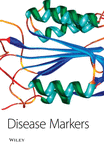OC125, M11 and OV197 Epitopes Are Not Uniformly Distributed in the Tandem-Repeat Region of CA125 and Require the Entire SEA Domain
Abstract
The human cancer antigen 125 (CA125) is over-expressed in epithelial ovarian cancer cells and it plays a role in the pathogenesis of ovarian cancer. This protein presents a repeat region containing up to sixty tandem repeat units. The anti-CA125 monoclonal antibodies have been previously classified into three groups: two major families, the OC125-like antibodies and M11-like antibodies, and a third group, the OV197-like antibodies. A model in which a single repeat unit contains all the epitopes for these antibodies has been also proposed, even if their exact position is still undetermined. In the present work, the affinities of the monoclonal antibodies, representative of the three families, have been investigated for different CA125-recombinant repeats through Western blot analysis. Different patterns of antibody recognition for the recombinant repeats show that CA125 epitopes are not uniformly distributed in the tandem repeat region of the protein. The minimal region for the recognition of these antibodies has been also individuated in the SEA domain through the subcloning of deleted sequences of the highly recognized repeat-25 (R-25), their expression as recombinant fragments in E. coli and Western blot analysis. Obtained data have been further confirmed by ELISA using the entire R-25 as coating antigen.




